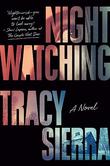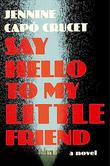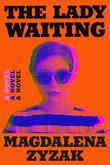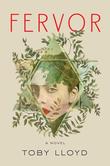
by Helen Macdonald ‧ RELEASE DATE: March 3, 2015
Whether you call this a personal story or nature writing, it’s poignant, thoughtful and moving—and likely to become a...
Awards & Accolades
Our Verdict

GET IT
Kirkus Reviews'
Best Books Of 2015
Kirkus Prize
finalist
New York Times Bestseller
National Book Critics Circle Finalist
An inspired, beautiful and absorbing account of a woman battling grief—with a goshawk.
Following the sudden death of her father, Macdonald (History and Philosophy/Cambridge Univ.; Falcon, 2006, etc.) tried staving off deep depression with a unique form of personal therapy: the purchase and training of an English goshawk, which she named Mabel. Although a trained falconer, the author chose a raptor both unfamiliar and unpredictable, a creature of mad confidence that became a means of working against madness. “The hawk was everything I wanted to be: solitary, self-possessed, free from grief, and numb to the hurts of human life,” she writes. As a devotee of birds of prey since girlhood, Macdonald knew the legends and the literature, particularly the cautionary example of The Once and Future King author T.H. White, whose 1951 book The Goshawk details his own painful battle to master his title subject. Macdonald dramatically parallels her own story with White’s, achieving a remarkable imaginative sympathy with the writer, a lonely, tormented homosexual fighting his own sadomasochistic demons. Even as she was learning from White’s mistakes, she found herself very much in his shoes, watching her life fall apart as the painfully slow bonding process with Mabel took over. Just how much do animals and humans have in common? The more Macdonald got to know her, the more Mabel confounded her notions about what the species was supposed to represent. Is a hawk a symbol of might or independence, or is that just our attempt to remake the animal world in our own image? Writing with breathless urgency that only rarely skirts the melodramatic, Macdonald broadens her scope well beyond herself to focus on the antagonism between people and the environment.
Whether you call this a personal story or nature writing, it’s poignant, thoughtful and moving—and likely to become a classic in either genre.Pub Date: March 3, 2015
ISBN: 978-0802123411
Page Count: 288
Publisher: Grove
Review Posted Online: Nov. 3, 2014
Kirkus Reviews Issue: Nov. 15, 2014
Share your opinion of this book

by Elie Wiesel & translated by Marion Wiesel ‧ RELEASE DATE: Jan. 16, 2006
The author's youthfulness helps to assure the inevitable comparison with the Anne Frank diary although over and above the...
Elie Wiesel spent his early years in a small Transylvanian town as one of four children.
He was the only one of the family to survive what Francois Maurois, in his introduction, calls the "human holocaust" of the persecution of the Jews, which began with the restrictions, the singularization of the yellow star, the enclosure within the ghetto, and went on to the mass deportations to the ovens of Auschwitz and Buchenwald. There are unforgettable and horrifying scenes here in this spare and sombre memoir of this experience of the hanging of a child, of his first farewell with his father who leaves him an inheritance of a knife and a spoon, and of his last goodbye at Buchenwald his father's corpse is already cold let alone the long months of survival under unconscionable conditions.
Pub Date: Jan. 16, 2006
ISBN: 0374500010
Page Count: 120
Publisher: Hill & Wang
Review Posted Online: Oct. 7, 2011
Kirkus Reviews Issue: Jan. 15, 2006
Share your opinion of this book
More by Elie Wiesel
BOOK REVIEW
by Elie Wiesel ; edited by Alan Rosen
BOOK REVIEW
by Elie Wiesel ; illustrated by Mark Podwal
BOOK REVIEW
by Elie Wiesel ; translated by Marion Wiesel

by Reyna Grande ‧ RELEASE DATE: Aug. 28, 2012
A standout immigrant coming-of-age story.
In her first nonfiction book, novelist Grande (Dancing with Butterflies, 2009, etc.) delves into her family’s cycle of separation and reunification.
Raised in poverty so severe that spaghetti reminded her of the tapeworms endemic to children in her Mexican hometown, the author is her family’s only college graduate and writer, whose honors include an American Book Award and International Latino Book Award. Though she was too young to remember her father when he entered the United States illegally seeking money to improve life for his family, she idolized him from afar. However, she also blamed him for taking away her mother after he sent for her when the author was not yet 5 years old. Though she emulated her sister, she ultimately answered to herself, and both siblings constantly sought affirmation of their parents’ love, whether they were present or not. When one caused disappointment, the siblings focused their hopes on the other. These contradictions prove to be the narrator’s hallmarks, as she consistently displays a fierce willingness to ask tough questions, accept startling answers, and candidly render emotional and physical violence. Even as a girl, Grande understood the redemptive power of language to define—in the U.S., her name’s literal translation, “big queen,” led to ridicule from other children—and to complicate. In spelling class, when a teacher used the sentence “my mamá loves me” (mi mamá me ama), Grande decided to “rearrange the words so that they formed a question: ¿Me ama mi mamá? Does my mama love me?”
A standout immigrant coming-of-age story.Pub Date: Aug. 28, 2012
ISBN: 978-1-4516-6177-4
Page Count: 320
Publisher: Atria
Review Posted Online: June 11, 2012
Kirkus Reviews Issue: July 1, 2012
Share your opinion of this book
More by Joshua Davis
BOOK REVIEW
by Joshua Davis ; adapted by Reyna Grande
BOOK REVIEW
edited by Reyna Grande & Sonia Guiñansaca
BOOK REVIEW
by Reyna Grande
© Copyright 2024 Kirkus Media LLC. All Rights Reserved.
Hey there, book lover.
We’re glad you found a book that interests you!
We can’t wait for you to join Kirkus!
It’s free and takes less than 10 seconds!
Already have an account? Log in.
OR
Trouble signing in? Retrieve credentials.
Welcome Back!
OR
Trouble signing in? Retrieve credentials.
Don’t fret. We’ll find you.





